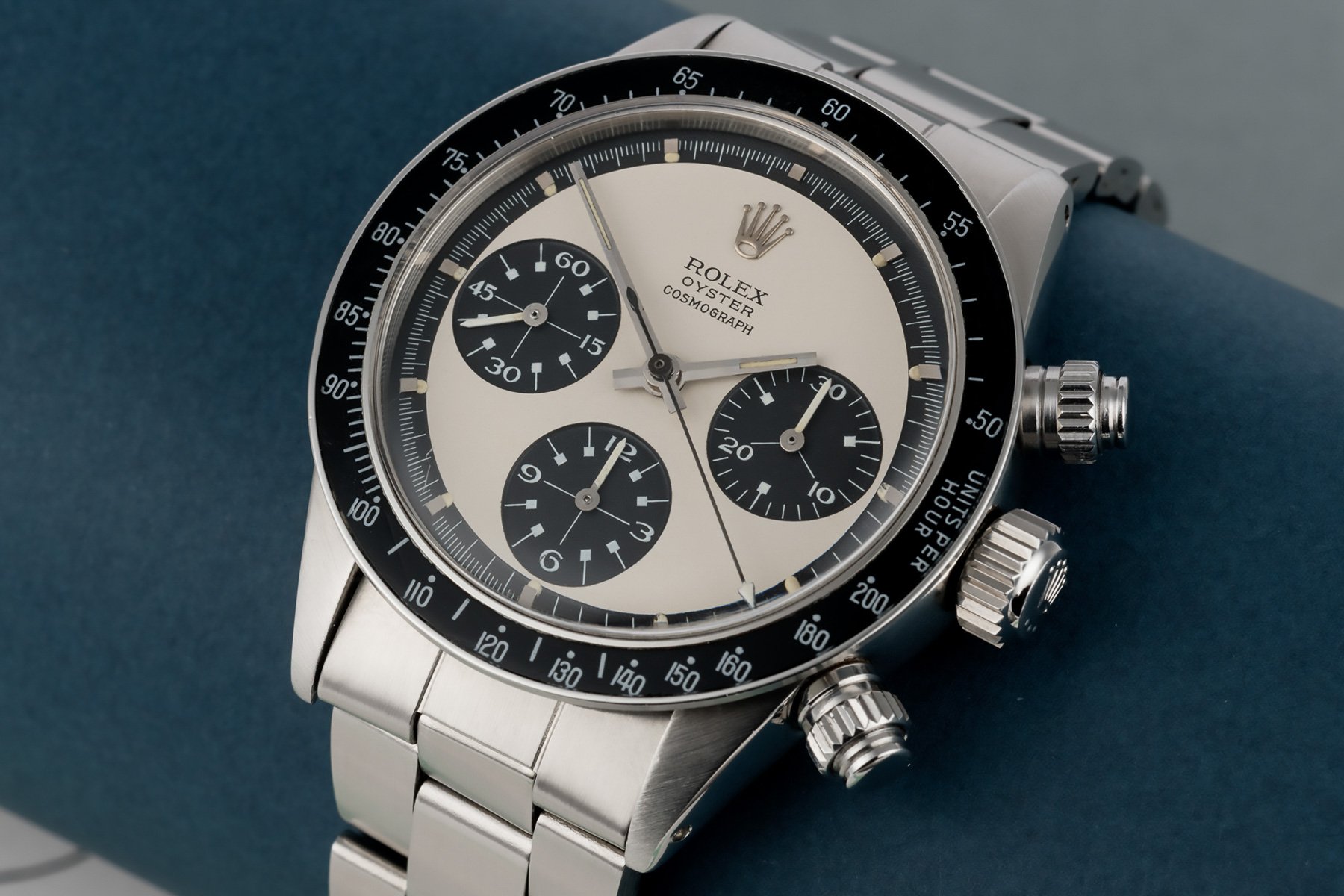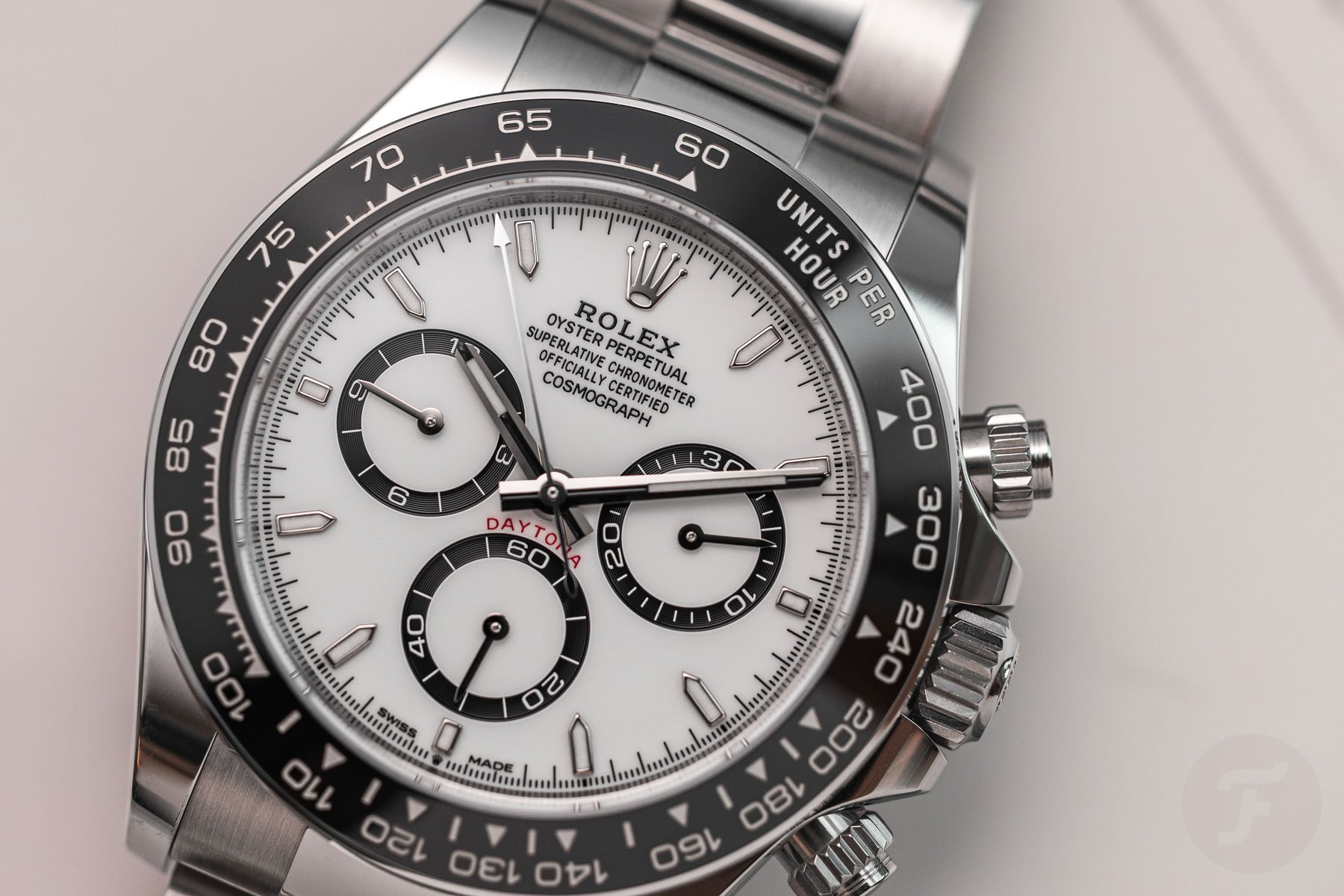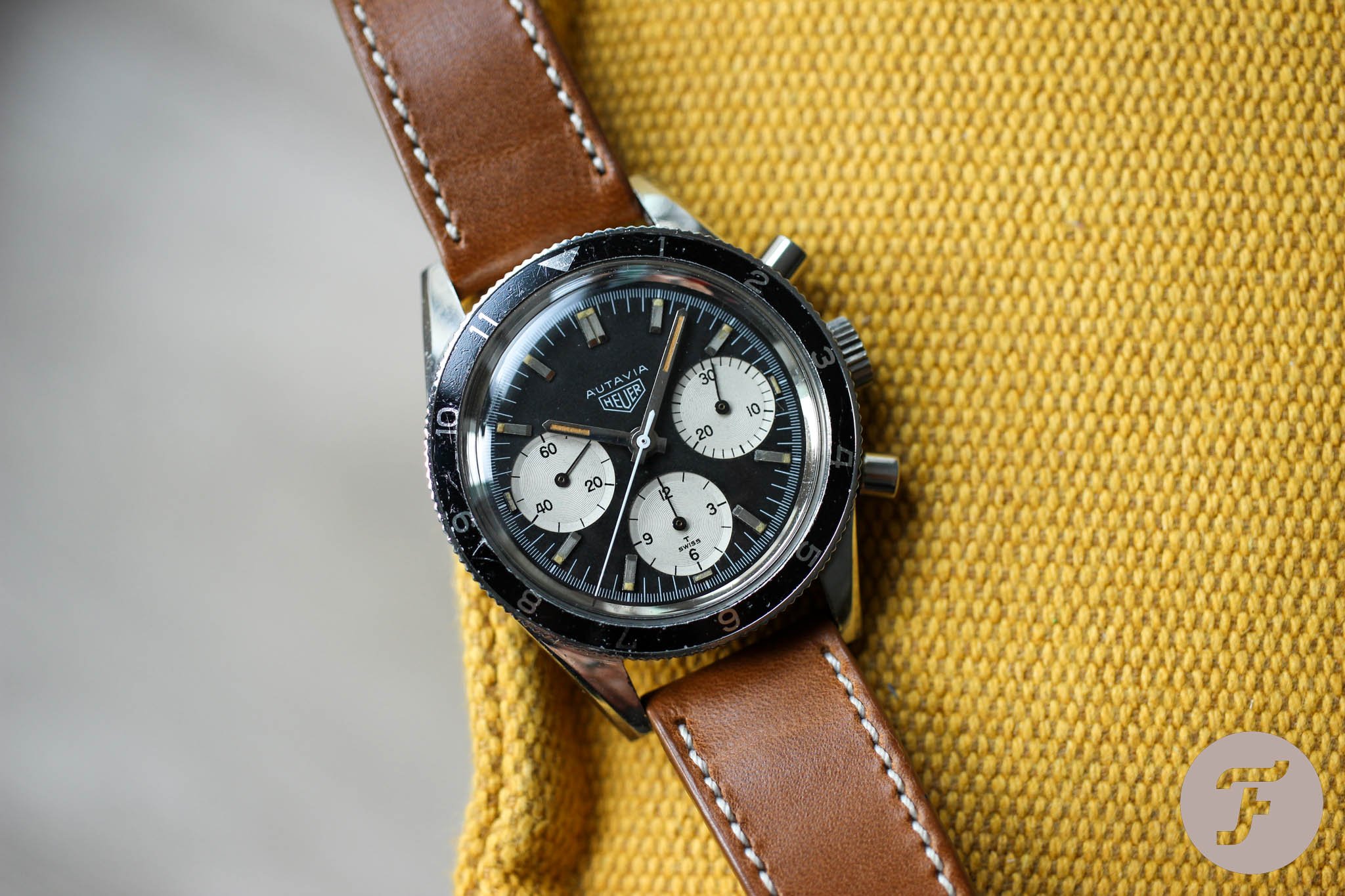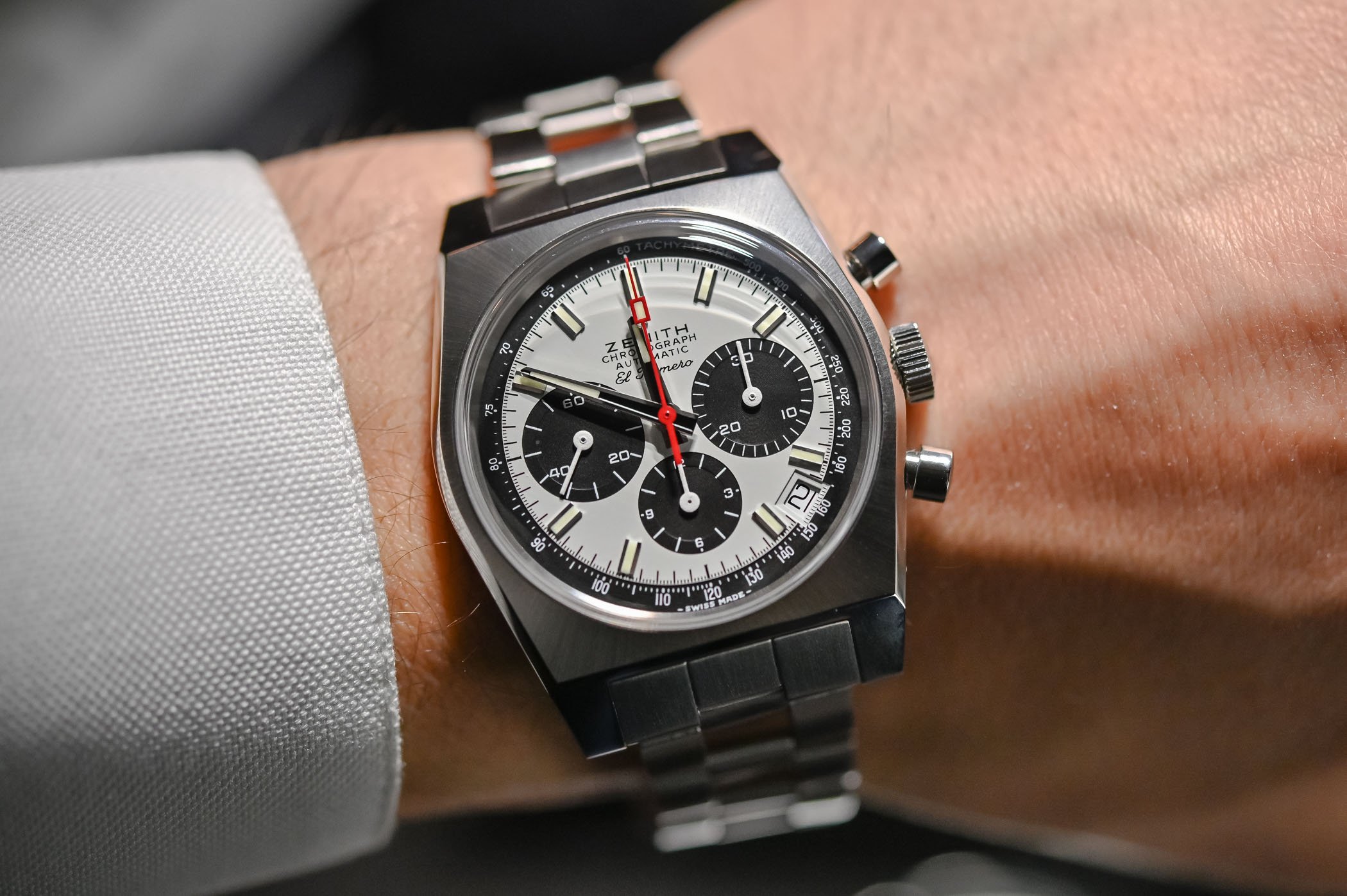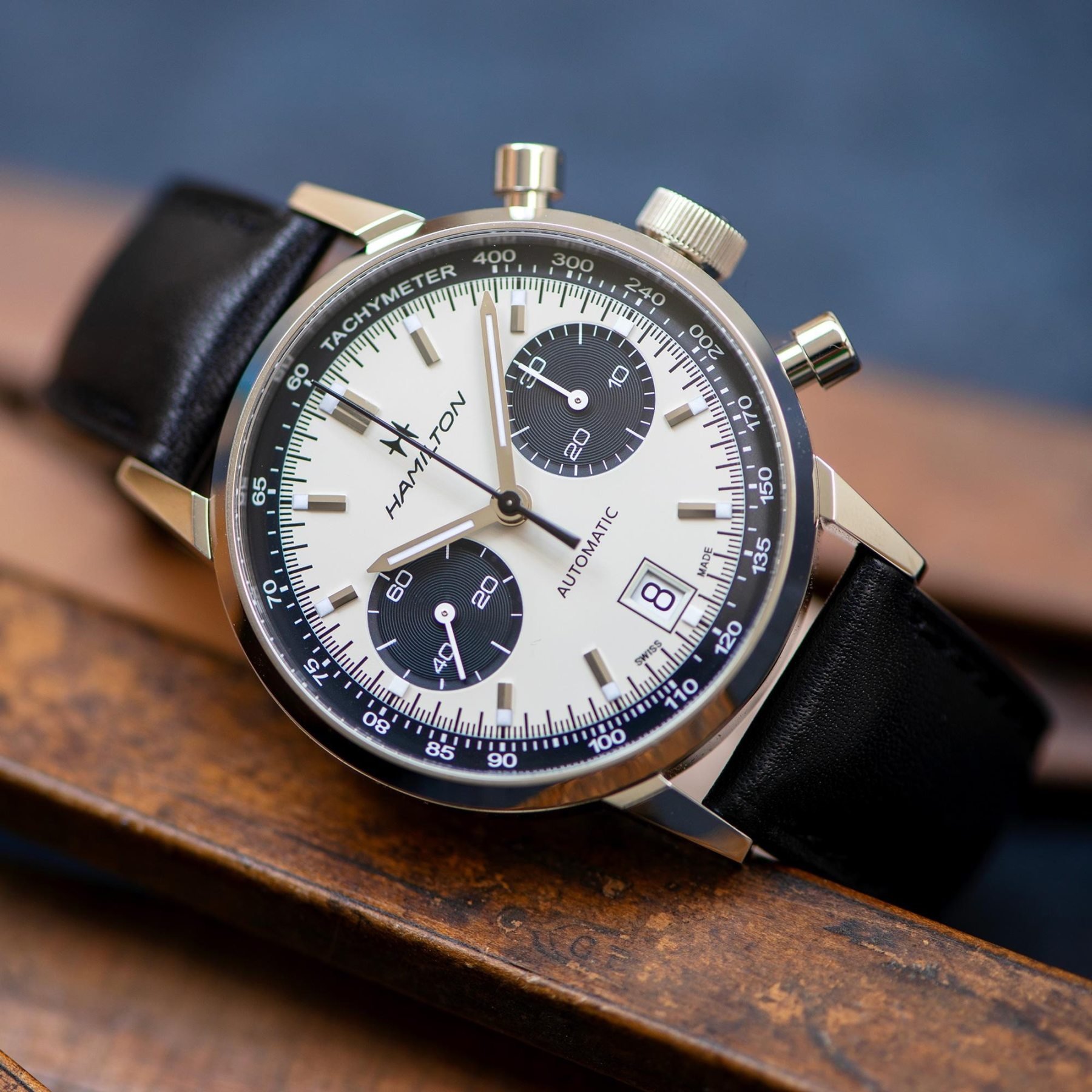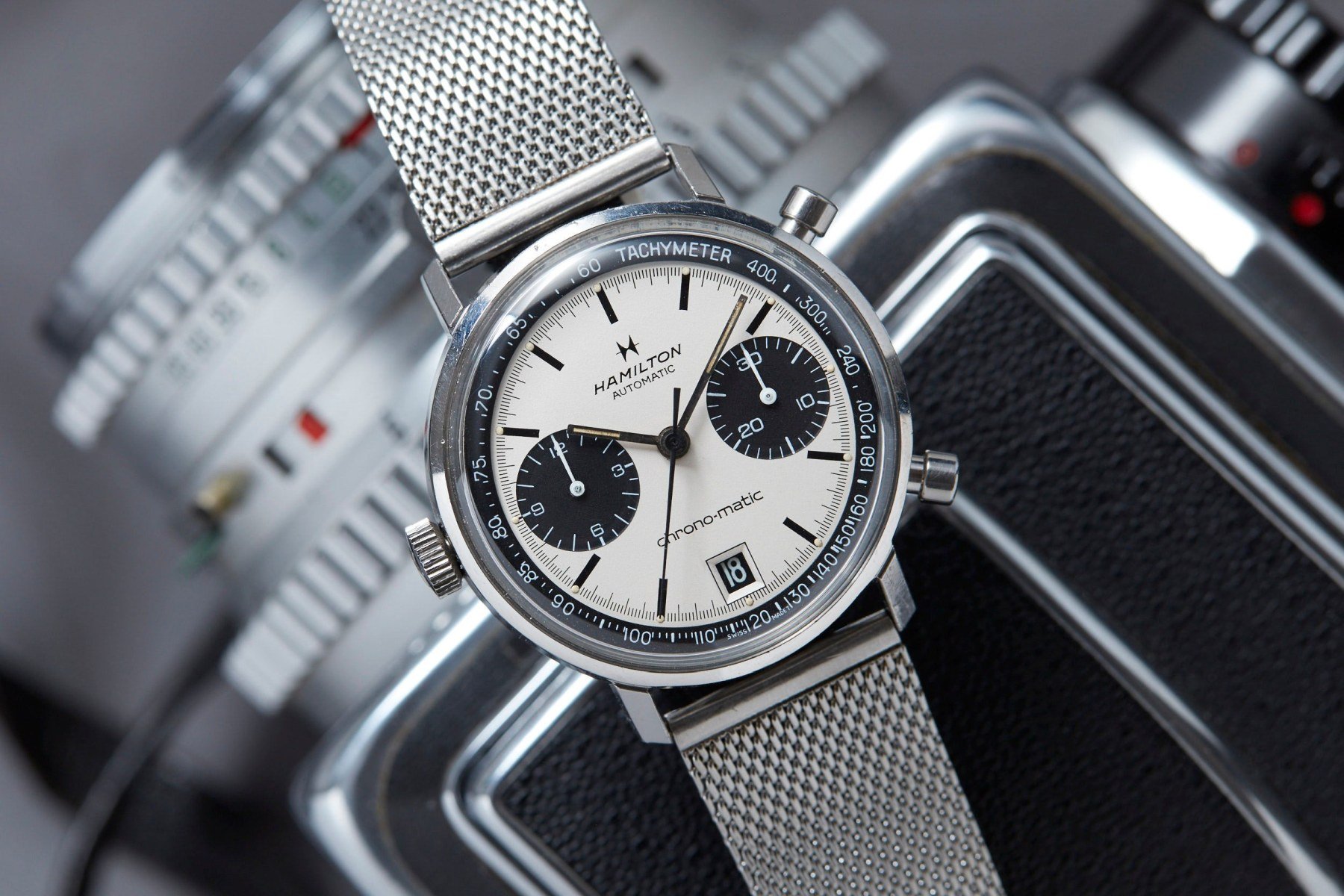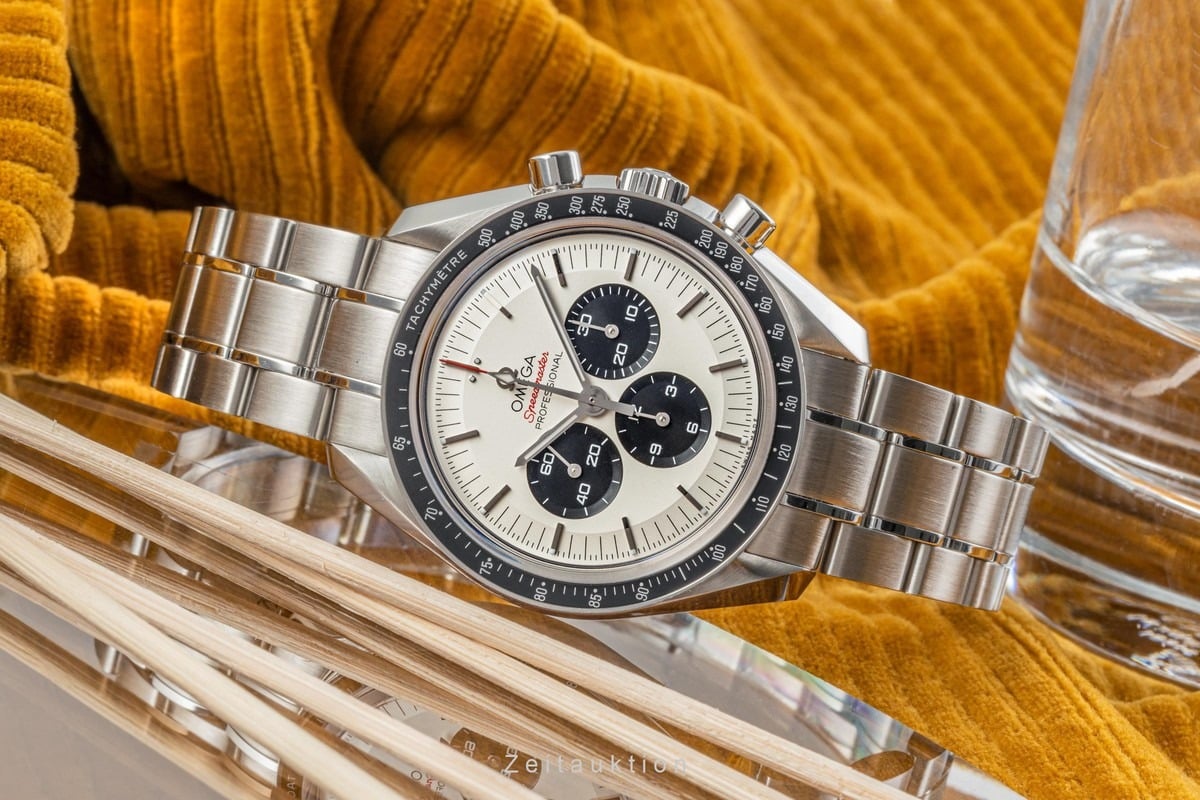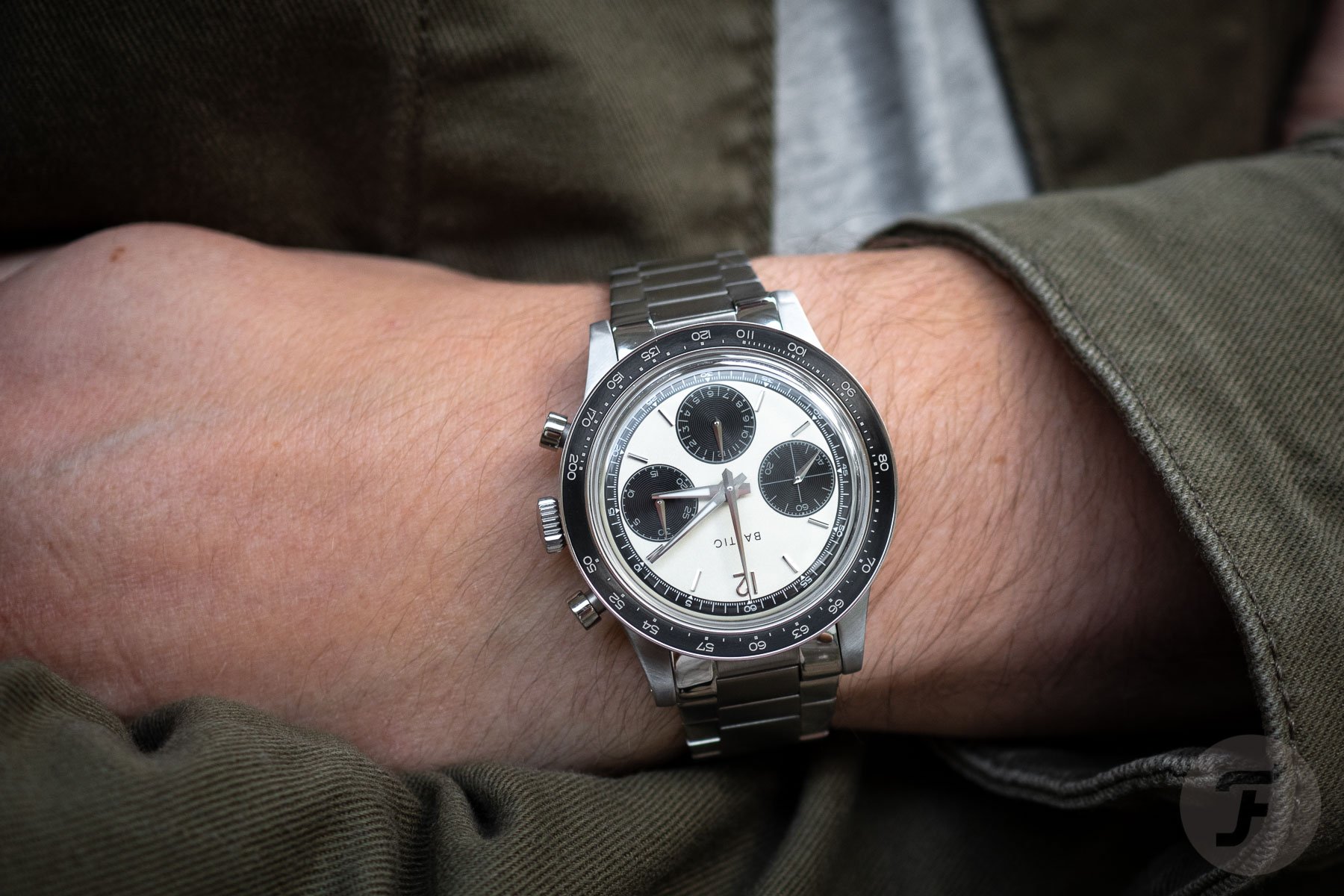Bear Essentials: The Enduring Panda-Dial Chronograph
The style and fashion trends of the 1960s can mostly only be described as regrettable in these times of image consciousness and scrutiny on social media. Fashion faux pas like bell-bottomed trousers, tie-dye, and platform shoes have caused more than a slight blush to the cheeks of those who championed them back in the Swinging Sixties. Luckily for the 1960s, there are a few iconic exceptions to this, one being the classic sports cars of this decade. Others are the timeless black-and-white houndstooth blazer (a decent example of which I am still struggling to find at a reasonable price) and, most notably, staying on that color theme, panda-dial chronograph watches.
A staple in design and demand
One would struggle to find a watch enthusiast who isn’t familiar with the iconic layout of a panda-dial chronograph and its corresponding reverse panda. Chronograph watches have a built-in stopwatch complication, and it is with mainstream motorsport that this complication has made its biggest connection. In practice, most chronographs’ central hand and two or three sub-dials allow their wearers to record elapsed seconds, minutes, and also hours. The registers’ smaller size also allows them to be a different color, distinguishing them from the main dial through visual contrast. The unique advantage that panda-dial chronographs hold over the cars and fashion of the ’60s is that their subtly nuanced style is just as much in demand now as it was when they debuted to the watch-buying public. Indeed, one could even argue that the demand today is greater than ever.
The late Hollywood actor Paul Newman’s Rolex Daytona 6239 is not only the most iconic panda-dial chronograph but also arguably the most well-known watch ever. It sold at Phillips Watch Auction in New York for over $17.75 million in 2017. You can spend hundreds of thousands to millions on a vintage classic, or you can spend a few hundred on some very good and well-known pieces in both the vintage and modern marketplaces. Here are my top four panda-dial picks, and of course, these models can work for collectors of vintage and modern watches alike.
The icon: Rolex Cosmograph Daytona
Rolex wears the crown as we kick off with the most recognizable panda-dial chronograph bar none, the Cosmograph Daytona. Technically, the most popular panda iterations were the black- and white-dial Daytona ref. 6239 and the game-changing 6263 and 6265. However, even all-white-dial steel Daytonas, through their heritage, can affectionately use the tag. Prices for vintage Daytonas are among the highest of any timepieces available.
Having mentioned the price of Paul Newman’s watch, not all will fetch millions. Nevertheless, we are talking tens of thousands up to hundreds of thousands. The current steel version released at Watches and Wonders 2023 (ref. 126500LN) may have, depending on your location, a waiting list of at least 10 years unless you are willing to pay up to triple the list price on the gray market. Nonetheless, Rolex Daytonas are the most sought-after pandas in the watch game.
The motorsport classic: Heuer Autavia
If I close my eyes and envision images of 1960s motor racing, the Heuer Autavia is the wristwatch I see adorning drivers’ wrists. The legendary bi- or tri-register reverse-panda Heuer Autavia wristwatch debuted to the masses in 1962. However, the Autavia name, a portmanteau of “Automobile” and “Aviation,” dates as far back as 1933 when Heuer released the Autavia dashboard stopwatch for cars and aircraft.
But from 1962, the watch would become the must-have chronograph worn by many racing drivers the world over. In 2022, TAG Heuer released a 60th-anniversary edition with a more classic panda dial (silver with two black chronograph registers and silver small seconds) and an impressive flyback feature. The classic Autavia 3646 was also the watch of choice of the legendary Italian-American racing driver Mario Andretti, one of the most successful drivers in the history of motorsport.
The beauty: Zenith El Primero A384
Zenith’s El Primero A384 is, in my opinion, the most beautiful example of a panda-dial chronograph. It perfectly captures the vintage looks of the late 1960s and the futuristic space-age notes synonymous with the era. Although Zenith originally released the watch in 1969, for me, it captures the 1960s nostalgia and vibes to a tee. As a tribute to the vintage A384, today’s modern version (above) has a ladder bracelet just like the original by Gay Frères and a 37mm tonneau-shaped case with protruding pushers and no crown guards. Zenith made 2,600 pieces of the beautiful A384 between 1969 and 1971, which is limited production by today’s standards. Luckily, the modern iteration is available from Zenith with no planned production limits. This stunning piece will stand out in any room for all the right reasons, and let’s not forget about the bragging rights of the now-legendary El Primero movement inside.
The everyman’s revival: Hamilton Intra-Matic
Another modern panda revival that retains the look of the original is the Hamilton Intra-Matic. Sure, it used to be called the Chronograph A in 1968 and was 36mm, but taking a close look at the two, you can see how well the tribute to the original has been executed. This is the only entry on this list that was not originally a Swiss creation. Indeed, Hamilton was still an American company hailing from Lancaster, Pennsylvania when the manually wound Chronograph A was first produced.
In the late 1960s, however, many watch brands were racing to make the first-ever automatic chronograph movement. In this race, Hamilton-Büren, Heuer-Leonidas, Breitling, and Dubois Dépraz unveiled their famous Calibre 11, which some say was the very first automatic chronograph movement available for sale worldwide. This historical movement was used in the Hamilton Chrono-Matic starting in 1969, giving it a heavy-hitter reputation at the time. The modern Intra-Matic Auto Chrono is 40mm and houses the newer H-31 automatic movement with the traditional white dial. But there’s also the 40mm Intra-Matic Chronograph H. It has a cream-colored dial and the hand-wound H-51 movement, more like the original Chronograph A.
Modern-day alternatives
The following are not 1960s classics with links to motorsport but just beautiful examples of watches inspired by the heritage discussed above. No article about chronographs is complete without a mention of the Omega Speedmaster. Above, you see the panda-dial Tokyo 2020 limited edition. This has the understated simplicity and aesthetic appeal typical of Omega and is, some might say, a somewhat underrated panda on the market.
In the heavy-hitting category of luxury intergrated-bracelet watches, it’s a tie between the Audemars Piguet Royal Oak Selfwinding Chronograph and the Girard-Perregeaux Laureato Chronograph with panda dials. These two boast serious heritage through the brands that produce them. They are two similar brands in terms of heritage but on different “race tracks” in terms of availability and affordability. The Tapisserie and Clous de Paris dials are things of beauty and will rev up the look of any wrists that they adorn.
Final thoughts
It is clear to see that the charm of panda-dial chronographs, particularly the Rolex Daytona, is as universally appreciated and loved as the namesake cuddly bear from central China. Their links with motor racing, luxury, and Hollywood give these distinct yet effortlessly simple chronographs a look renowned the world over. With all their history and the persistent demand for modern revivals, they look set to remain a staple in the watch enthusiasts’ collections for the near and distant future. In a nutshell, panda-dial chronographs are most certainly icons that the watch world can’t bear to be without. Let us know what you think of them and my picks in the comments below.
Featured image: Bulang & Sons

